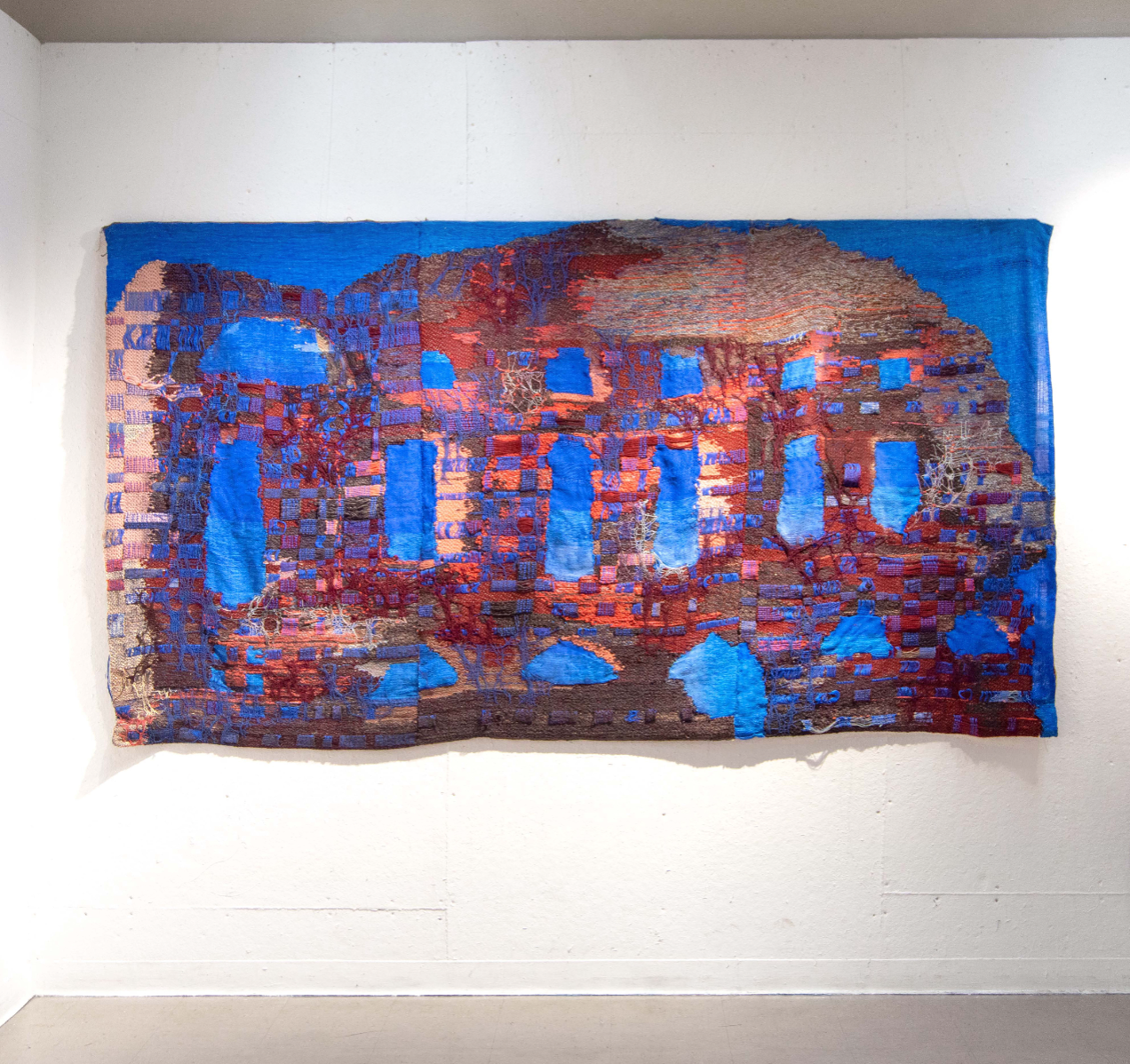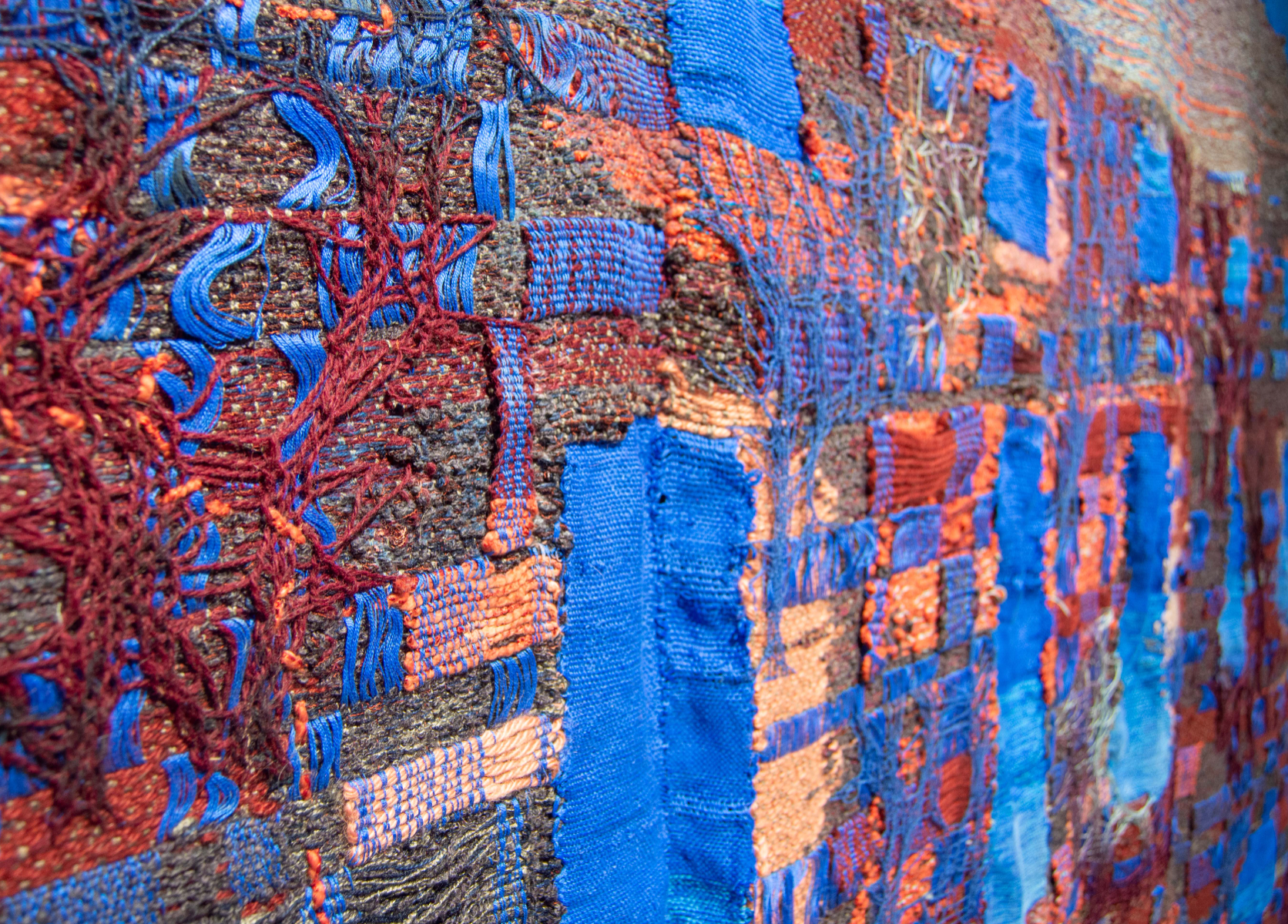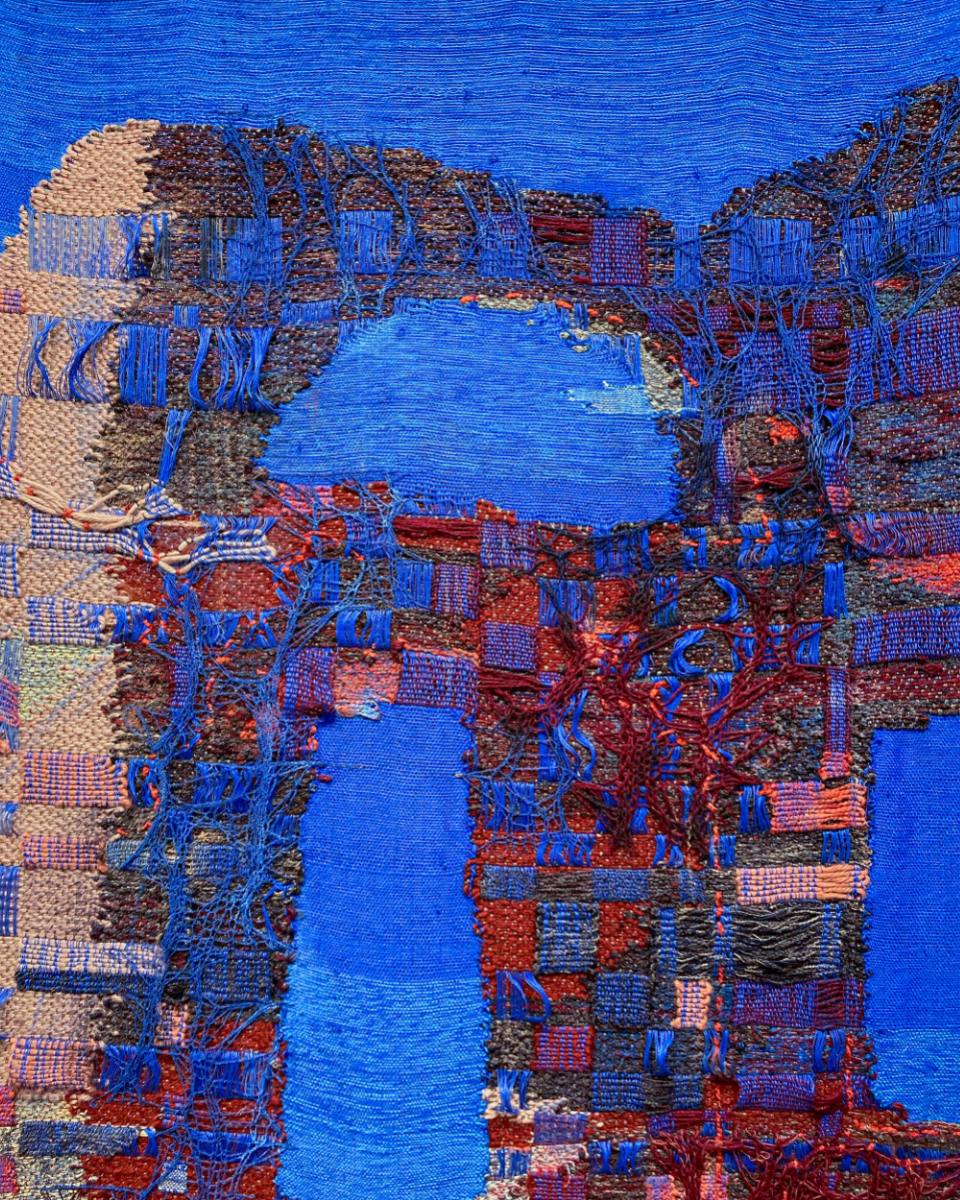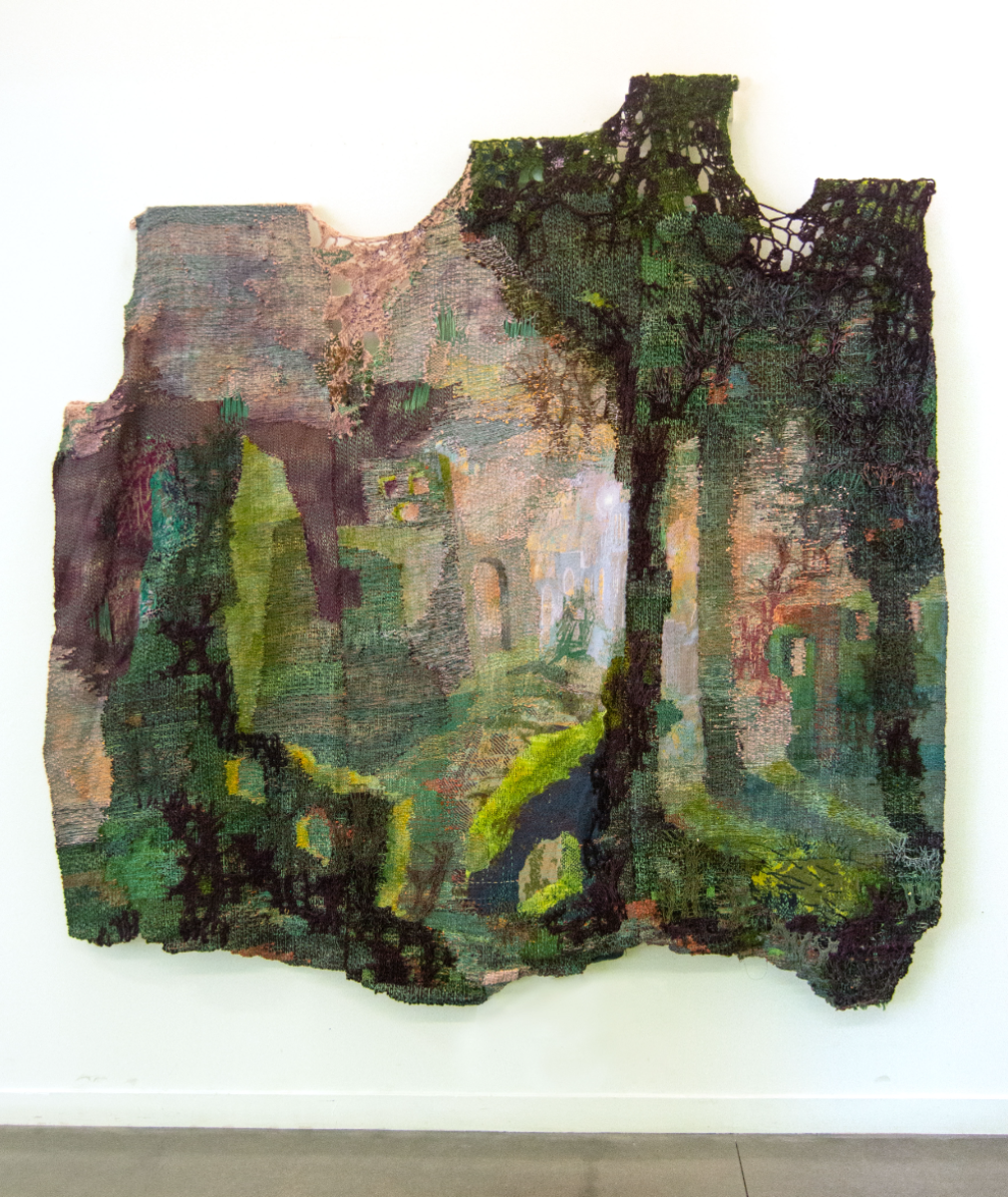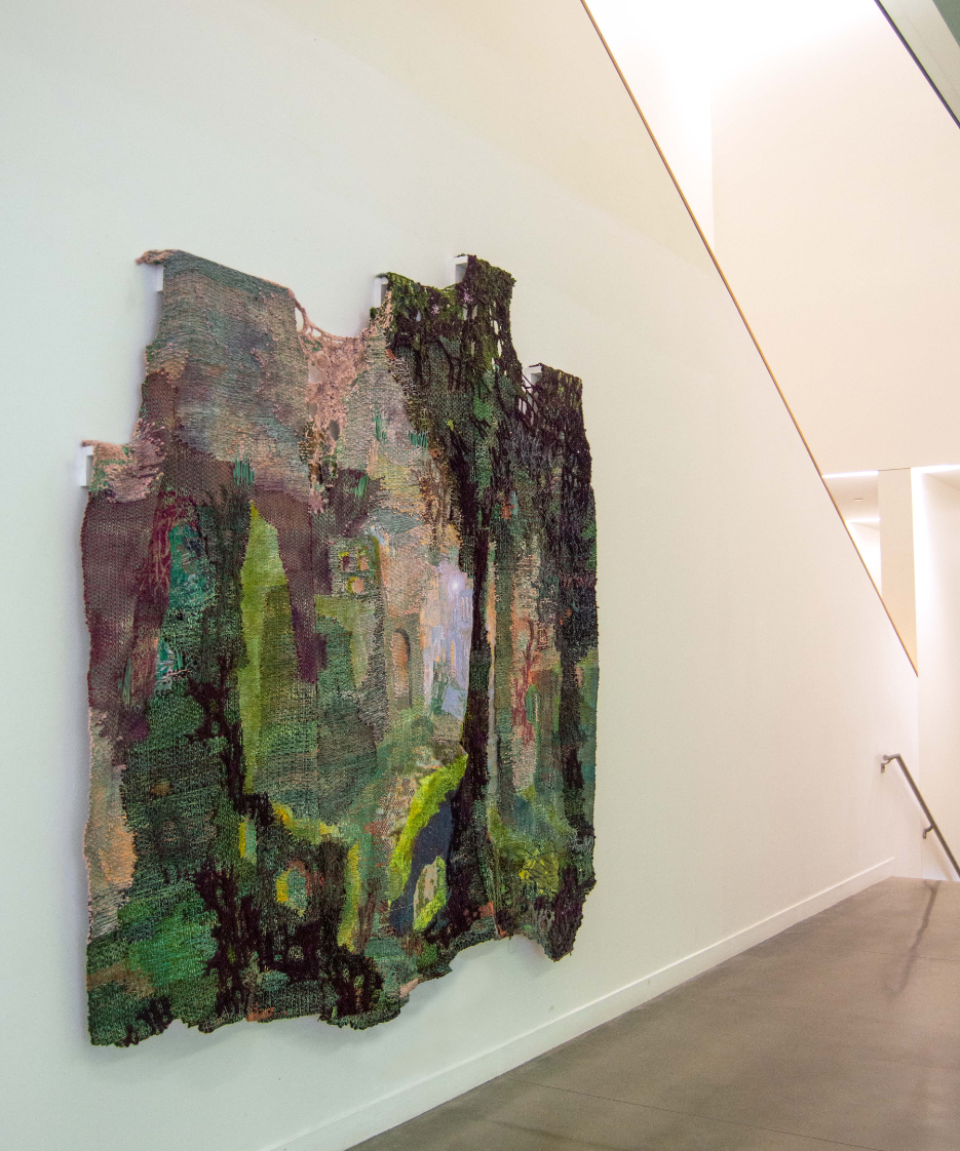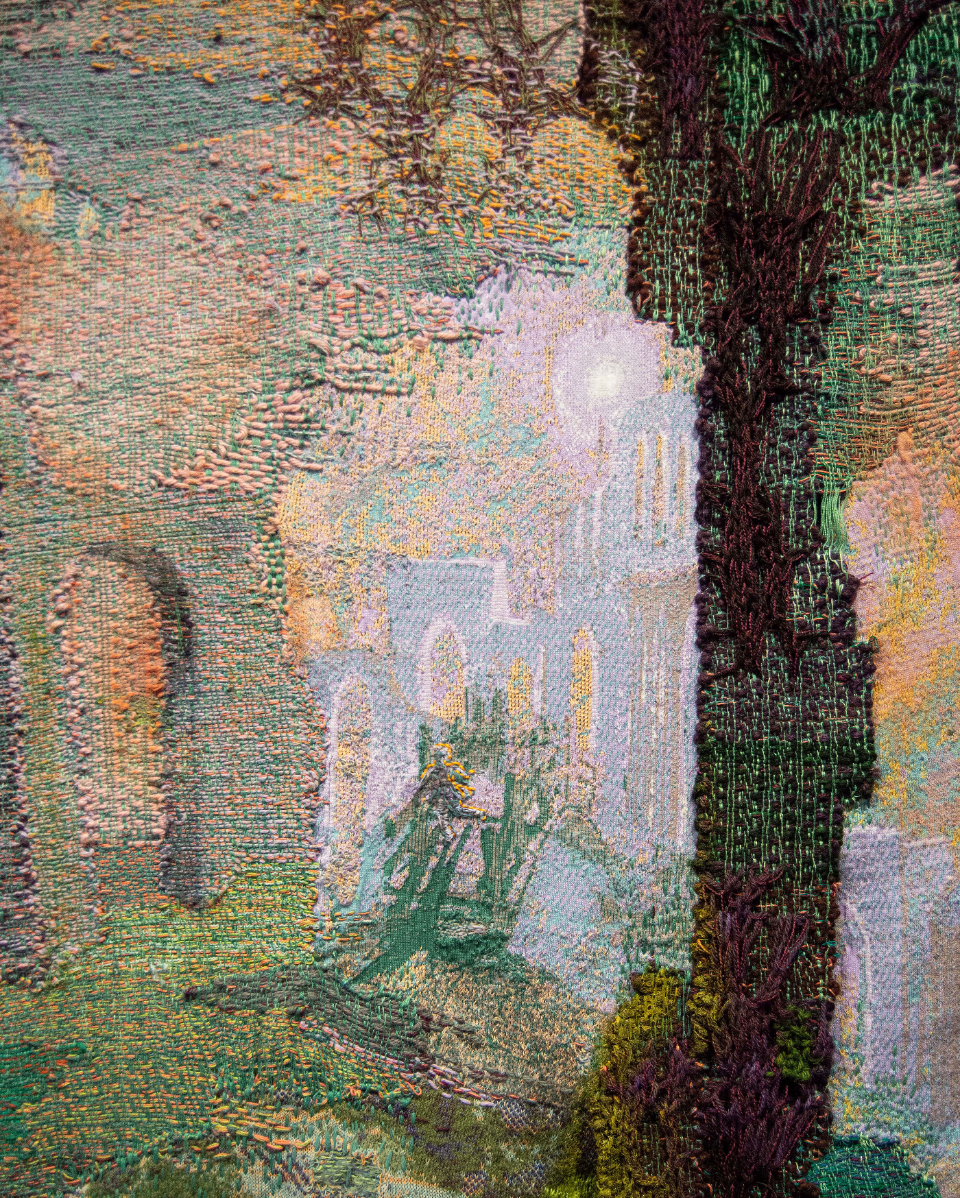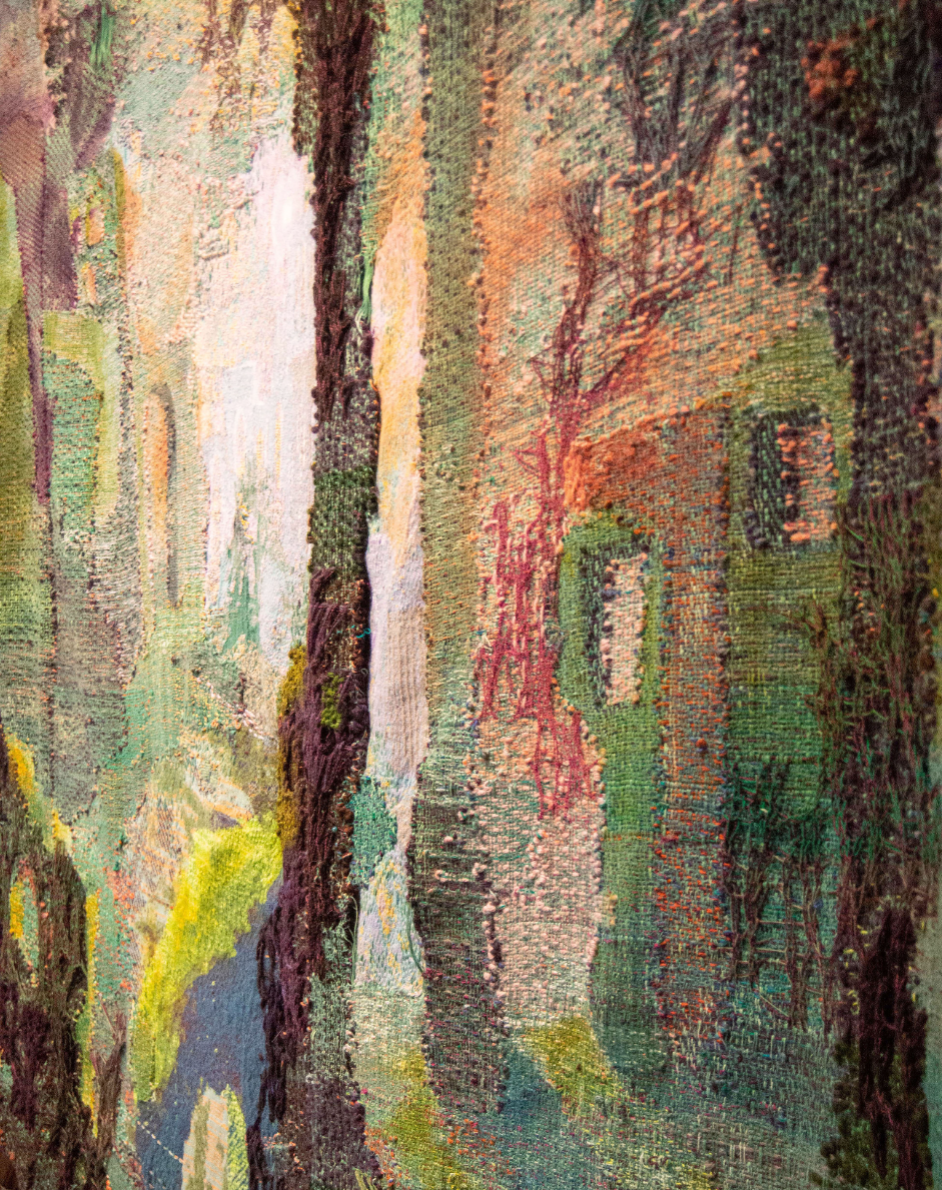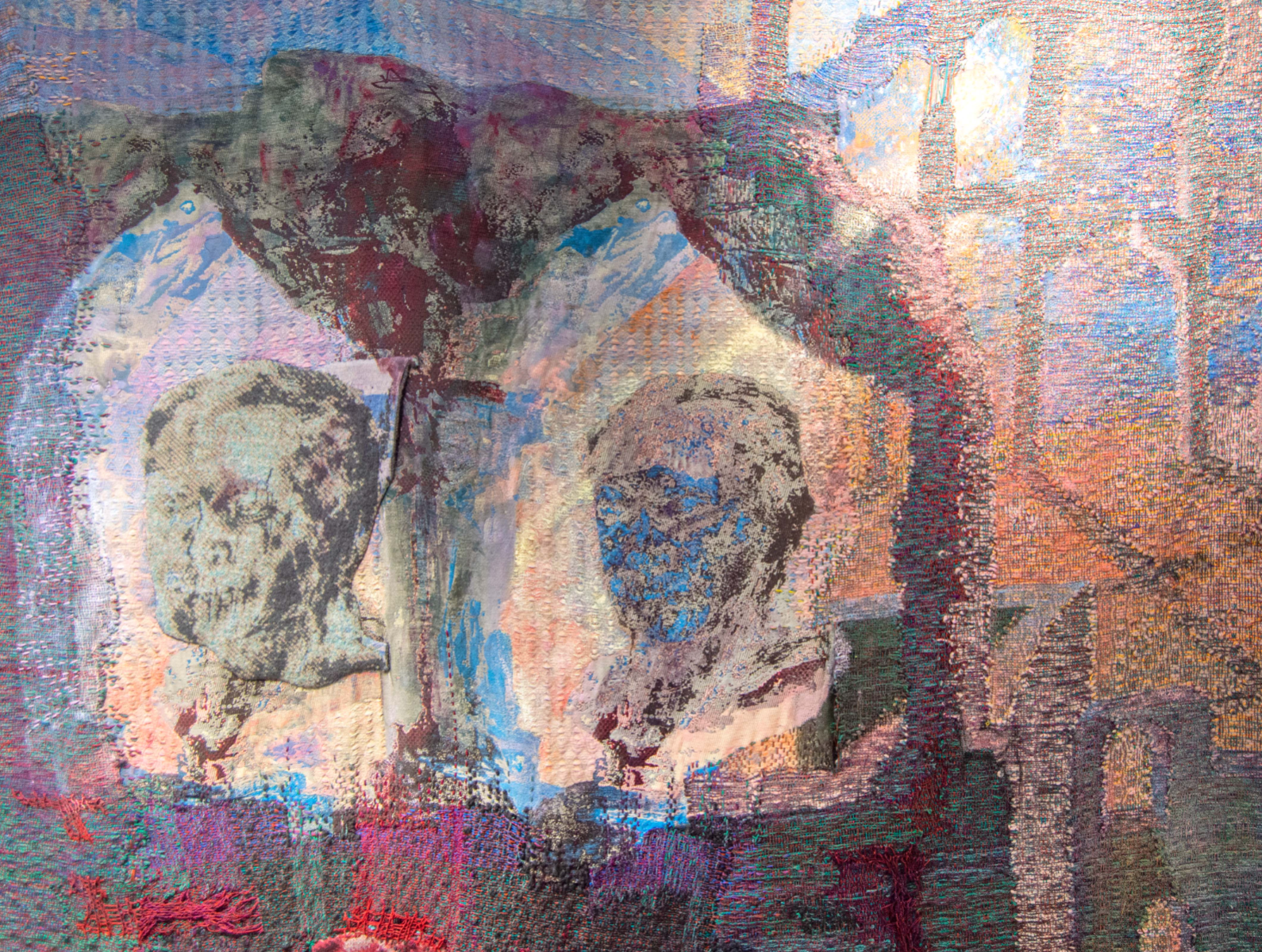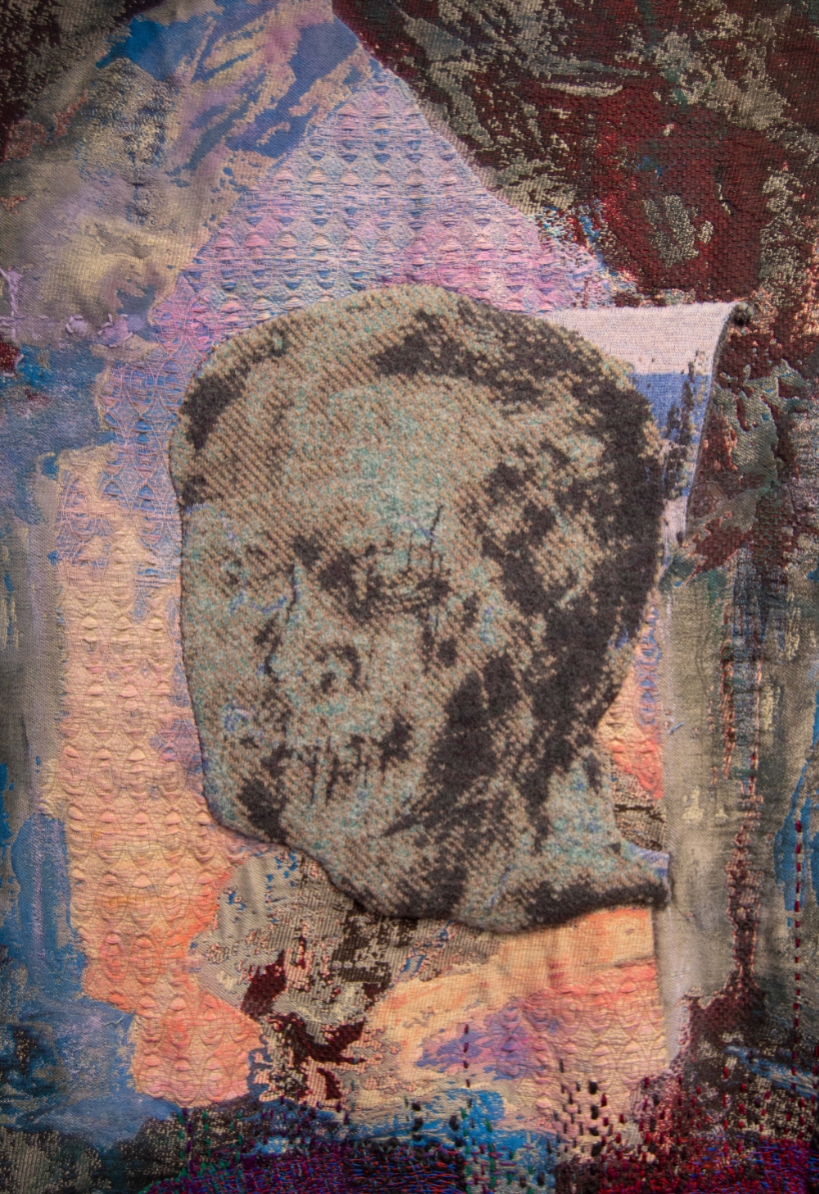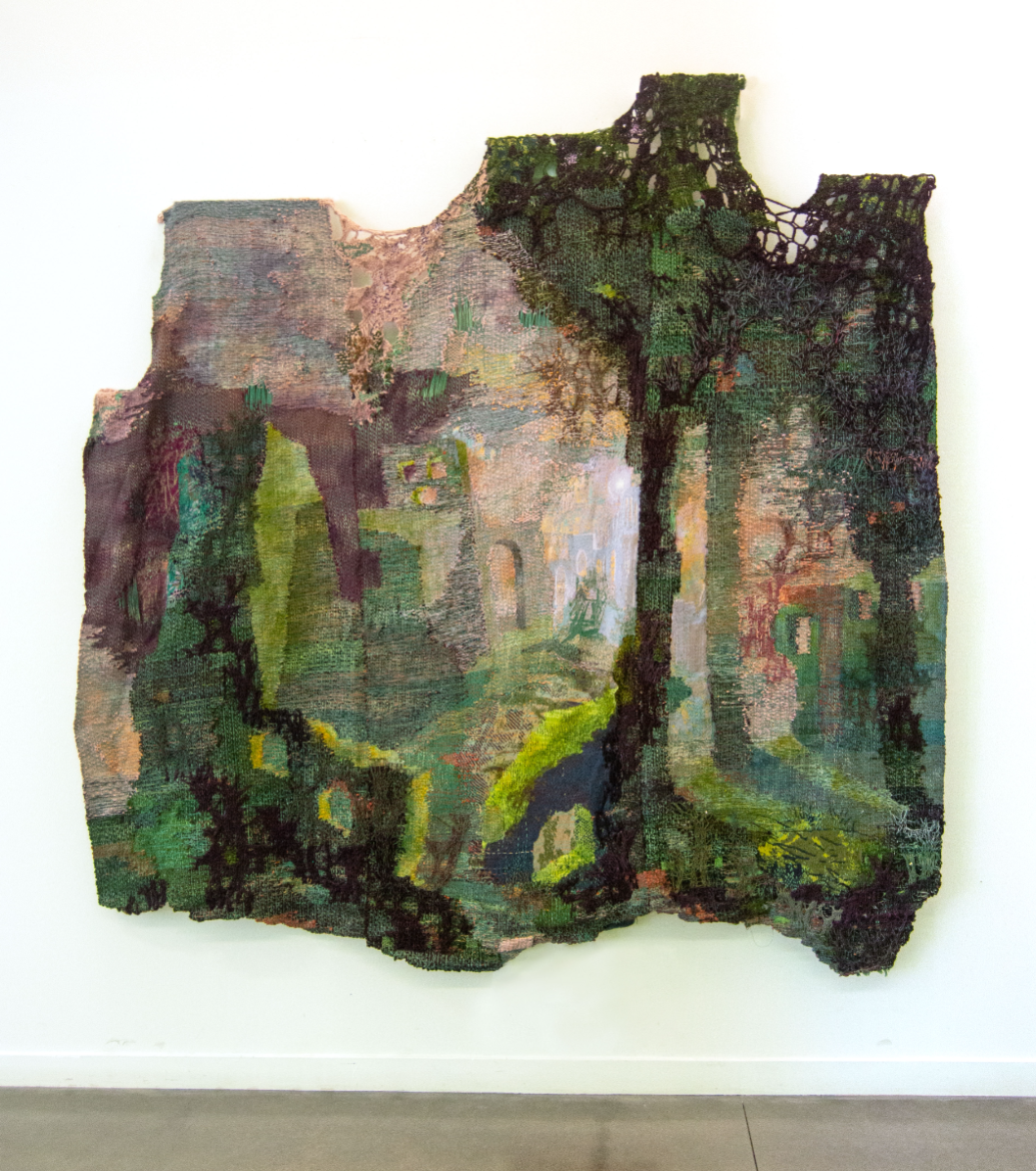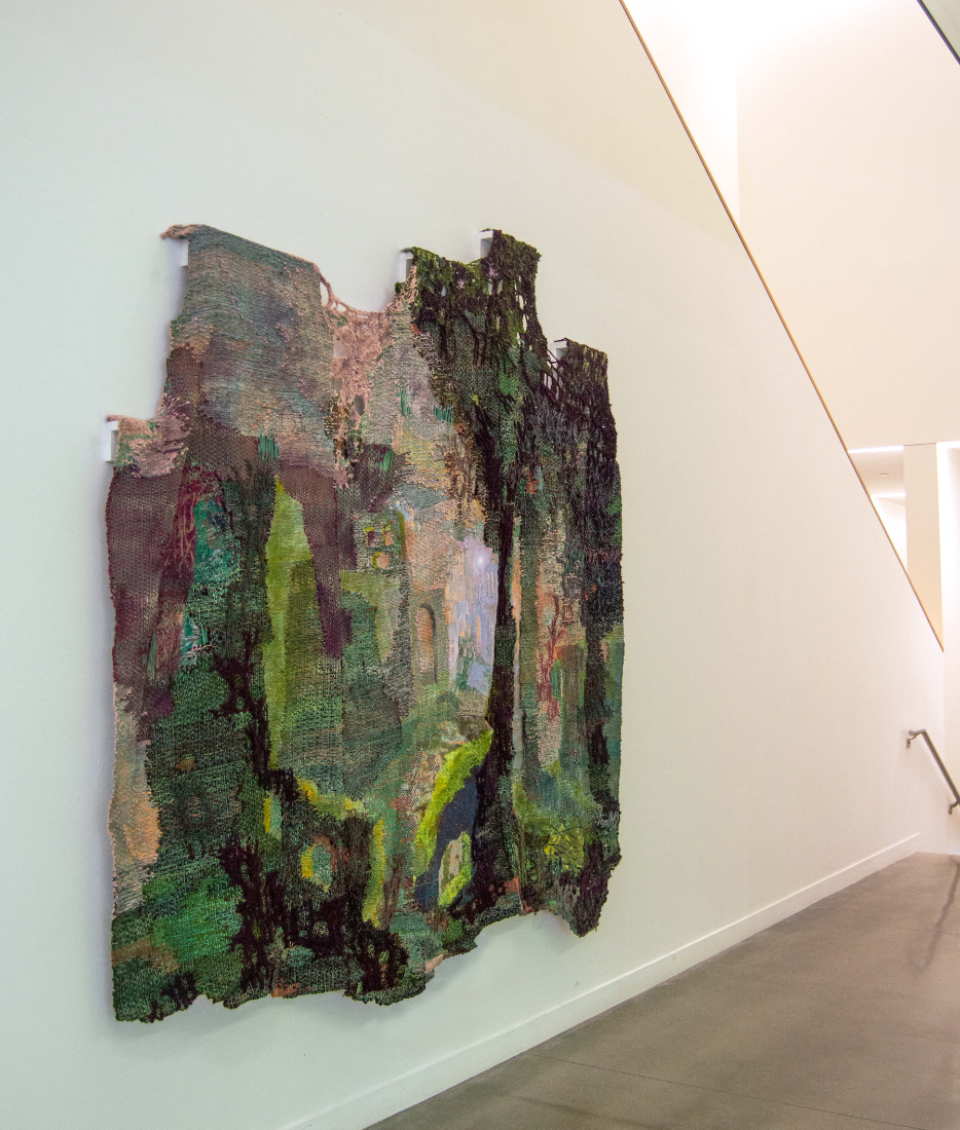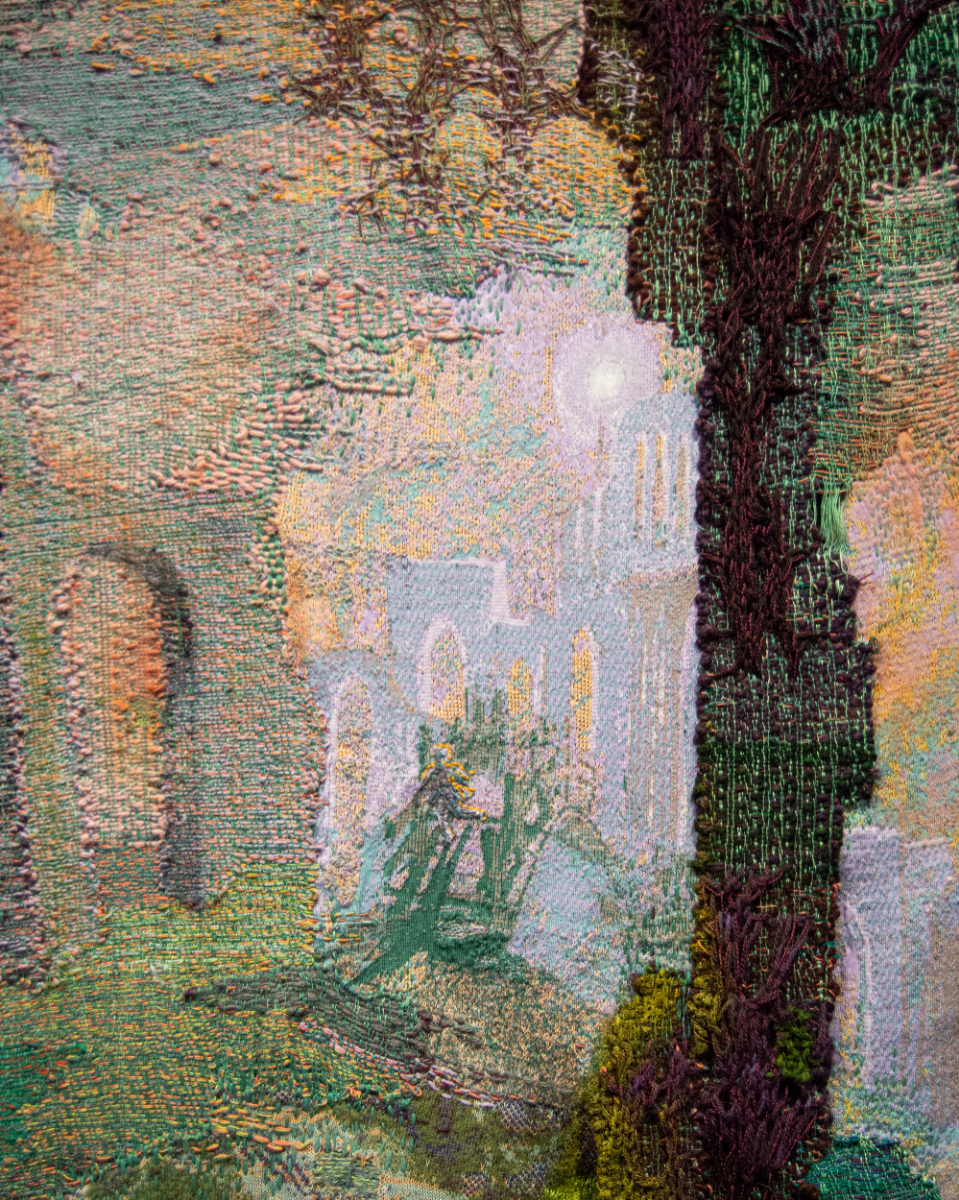Maris Van Vlack
Textiles BFA
Rhode Island School of Design
Specialisms: Fine Art / Textiles - Weave / Contemporary Craft
Location: Boston, United States
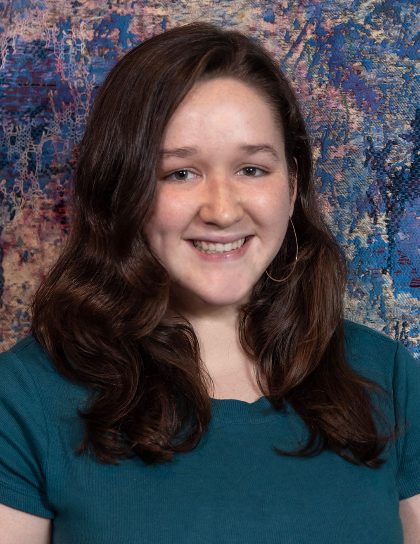
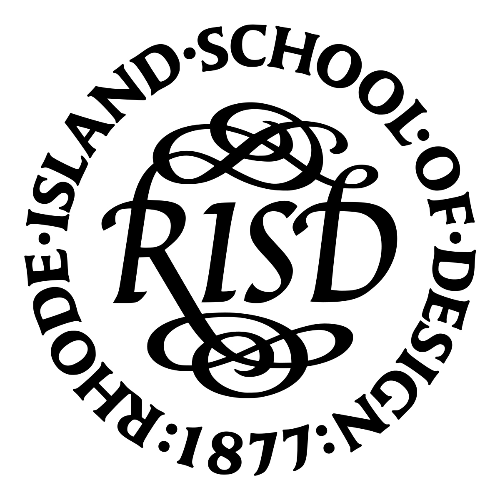
Maris Van Vlack

First Name: Maris
Last Name: Van Vlack
Specialisms: Fine Art / Textiles - Weave / Contemporary Craft
Sectors:
My Location: Boston, United States
University / College: Rhode Island School of Design
Course / Program Title: Textiles BFA
About
These woven tapestries depict the architecture from the home that the artist’s grandmother grew up in, which was bombed and destroyed during World War II. The hand-woven block structure and surface knitting reference patterns in cartography, tying the architectural forms back to the geographic region where it once existed. The piece intends to begin a conversation about spaces that cannot be returned to but exist through the repetition of storytelling and memory.
Competitions

Global Design Graduate Show 2023
This work uses imagery of architectural ruins to create an imagined surreal landscape, which represents a family story of loss and destruction of a war-torn region during World War II. Areas of the fabric are industrially knitted on a stoll machine and are stretched within open sections of hand-woven fabric panels as a way to create a mysterious, atmospheric space with shifts in focus. The hand-weaving uses a technique developed by the artist of hand-knitting a transparent layer over the weaving while it is on the loom, which creates a netting that obscures the imagery in the tapestry below it. The layers and shifts in focus mirror the way that memory gets hidden and lost throughout time.
Competitions

